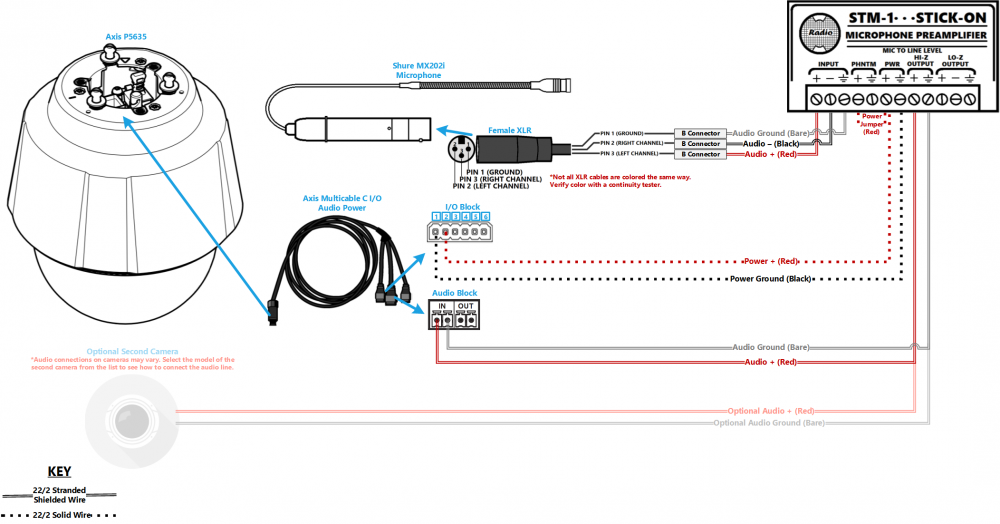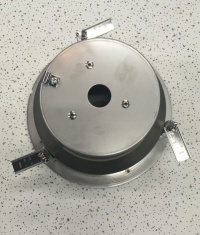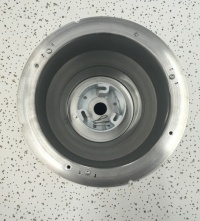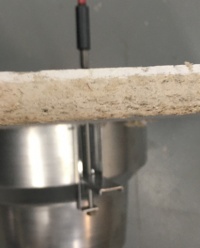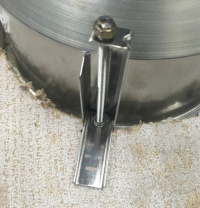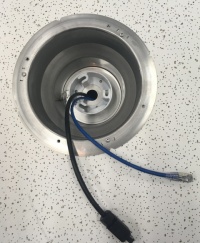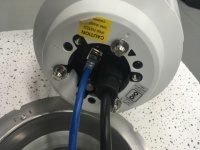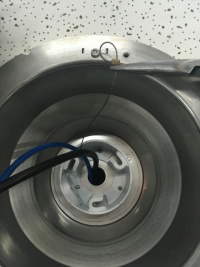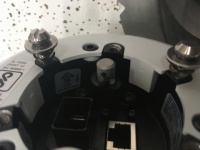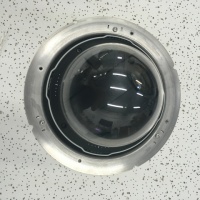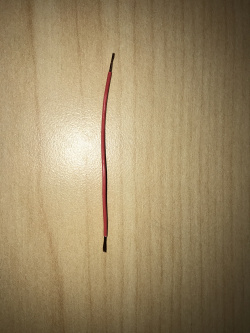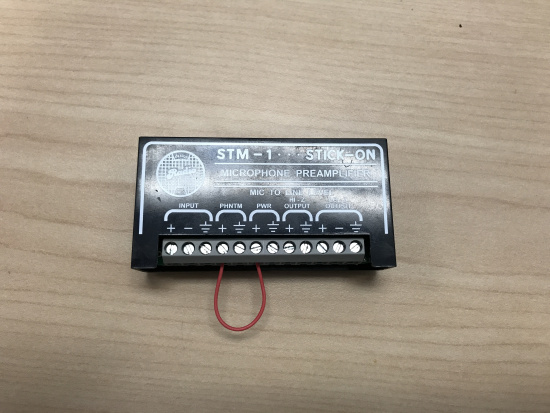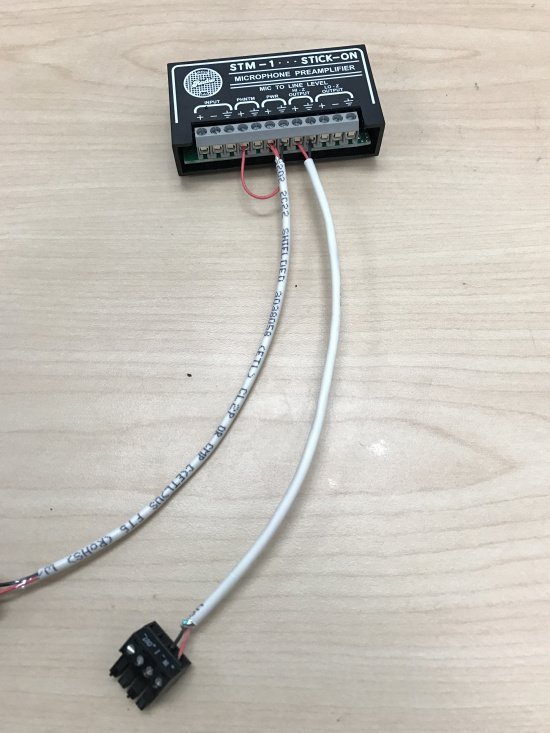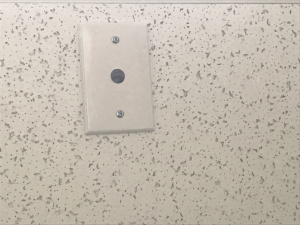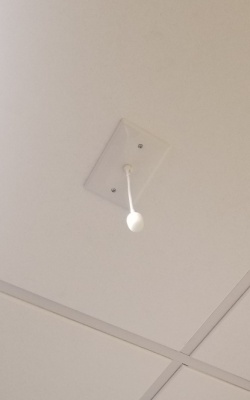Installing an Axis P5635-E with a Shure MX202i Microphone
Contents
Wiring Diagram
Select Optional Second Camera
Required Parts And Tools
- Axis P5635
- AXIS T94A02L Recessed Mount (If mounting to drop ceiling)
- RDL STM-1
- Female XLR Pigtail
- Shure MX202i Microphone
- Axis MultiCable C I/O Audio & Power
- Axis Push-Pull connector
- T10 security bit
- Wire Stripper
- 1/2" paddle bit
- Tap-Cons (if mounting to concrete) (3/16")
- Screws and Anchors (3/16")
- 1 blank single gang wall plate
- Toggle Bolts (If mounting to drop ceiling tile)(3/16")
- Drill bit and drill
- Phillips head drill bit or Phillips head screwdriver
- Small Flat head screwdriver
- Shielded Stranded 22/2 + ground Wire
- Razor / box cutter
- B-Connectors
- Drywall Saw
- Wind Screen (Inside MX202i kit)
- Rubber Stopper (Inside MX202i kit)
- 4 pin XLR-M to XLR-M Adapter (Inside MX202i kit)
Installation Instructions
Note: There is no need to disassemble the 5635 camera.
Mounting the Camera
- Locate the network drop above the ceiling either being a male Ethernet end (service loop) or a biscuit jack. This will have been ran back to the POE switch.
- Note: If the switch does not have POE, a POE injector will need to be installed at the network closet.
- Remove Axis T94A02L kit from packaging. This will include the mounting bracket and the camera dome ring.
- Determine the location where the 5635 will be mounted and remove the ceiling tile
- Measuring the ceiling mount bracket, note that there is a slight lip to the camera mount
- Find center of the ceiling tile and using a pencil, draw a circle approximately nine inches in diameter
- Using a drywall saw, cut out the section of ceiling tile where the mount will be inserted
- Using a T20 bit, tighten the mounting arms of the ceiling mount
- Pass the Axis MultiCable C I/O and the Ethernet cable through the hole at the top of the camera mount
- Connect cables to their respective ports
- Before locking the 5635 to the mounting posts in the ceiling mount, ensure that the safety cable is attached to the camera
- Insert the camera into the ceiling mount and twist until locked in place securely
- Using a T20 bit, secure the dome ring to the camera mount
- Carefully return the ceiling tile to its location
Note: If not using drop ceiling, use alternate instructions inside of the box for mounting to a hard ceiling.
Connecting Wiring
- Begin but cutting two lengths of 22/2. Ensure they are long enough to reach the microphone location. One will be for audio signal. One will be for power.
- Strip the jacket off the 22/2, revealing the red, black, and common (bare wire) on both sides of the cable.
- Remove the string and plastic casings covering the red and black cables.
- Strip the red and black jackets off the wire exposing the copper. Cut copper evenly on both ends. Remove ground.
- At the Axis MultiCable C I/O, connect the ends of 22/2
- Audio will be connected to the "In" on the audio terminal block - Red to +, Black to -
- Power will be connected to the I/O terminal block - Red to to 2, Black to 1
Connecting the STM-1
- Cut a short piece of 22/2 cable (approx. 1 inch). Strip the jacket and from the cable and remove all contents keeping only the red cable. On both ends of the red cable, strip off a piece of the jacket (See picture).
- Connect one end of the 1 inch audio cable to the +PWR terminal and connect the other end into the +PHNTM terminal.
- Connect the cable ran for power to both PWR terminals (Red to +, Black to the other terminal) of the STM-1. Connect the other side to the IO phoenix connector (Red to 2, Black to 1).
- Connect the cable ran for audio to both HI-Z OUTPUT terminals (Red to +, Black to the other terminal) of the STM-1. Connect the other side to the audio in portion of the audio phoenix connector (Red to +, Black to –).
- Using the Velcro that comes with the STM-1, attach the STM-1 to the wall above drop ceiling hidden from sight.
- The microphone will be connected via the input terminals of the STM-1 (Red to +, Black to -, ground to the ground terminal).
(NOTE: If there are 2 cameras in the room, duplicate these steps to get to the 2nd camera. HI-Z output can feed 2 cameras, but no more. If there are 2 Shure MX202i Microphones, duplicate steps. An STM-1 can power and gather audio from 2 Shure 202i mics.)
Connecting and Mounting the Microphone
- Asses the drop ceiling to decide best mounting placement for the MX202i. Avoid tiles adjacent to HVAC or fire safety devices.
- Drill a hole into the center of the single gang plate using the ½” paddle bit (if not prefabricated).
- Measure center of the drop ceiling tile and drill a similar hole with the ½” paddle bit.
- Align the single gang plate to the location of the microphone on the drop ceiling tile using a pair of toggle bolts.
- Run the MX202i through the ½” hole in the ceiling tile and single gang plate with the rubber stopper to secure the microphone in place and plugging the ½” hole .
- Adjust the length of the cable of the microphone to a desirable length, hiding the remainder in the ceiling near the STM-1. Attach the windscreen to the MX202i.
- Run the XLR mini cable to the STM-1 location.
- Connect the connect the XLR mini to the 4 pin Male XLR adapter.
- Strip away a portion of the red and black cables inside the pigtail, revealing the copper wire inside.
- The microphone will be connected via the input terminals of the STM-1 (Red to +, Black to -, ground to the ground terminal).
- Connect the female XLR to the Male XLR adapter
